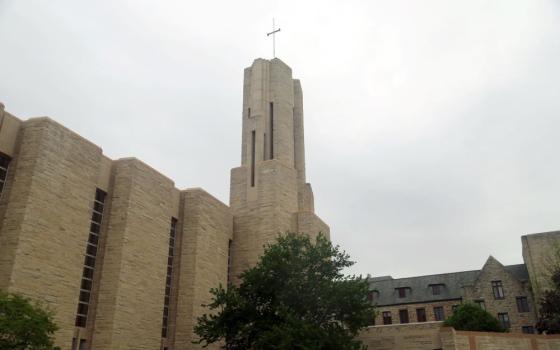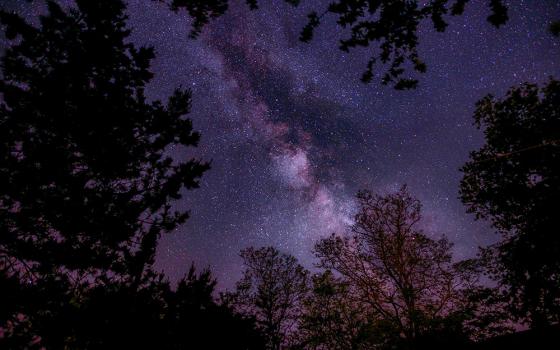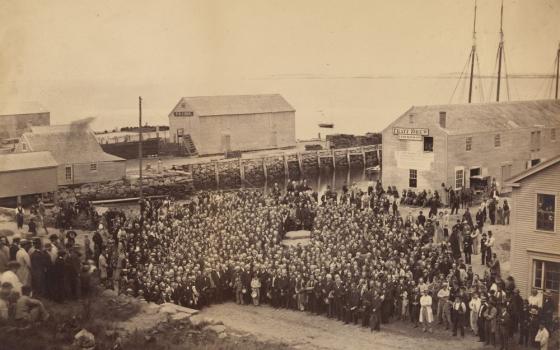By JOHN L. ALLEN JR.
Rancho Mirage, California
Some days this job can be rough, but it’s not without its occasional perk. Today, for example, I find myself at the lush Rancho Las Palmas Resort and Spa, located in sunny Rancho Mirage, California, for a presentation to the St. Joseph Health System Trustee Conference.
Sponsored by the Sisters of St. Joseph of Orange, St. Joseph Health System serves California and West Texas with fourteen hospitals, three home health agencies and multiple physician groups. I was asked to bring a global perspective to their trustees on the question of Catholic identity for health care systems.
I began with this premise:
* * *
t“I’ve been asked to speak on the subject of Catholic identity, and from the outset I should acknowledge that this is a notoriously imprecise subject. In recent years, the phrase ‘Catholic identity’ has become the ecclesial equivalent of secular buzzwords such as ‘democracy’ or ‘family values,’ i.e., ideals around which one can build a near-universal consensus, as long as we avoid defining what they mean. In fact, discussions of ‘Catholic identity’ often function as a sort of Rorschach inkblot test, telling us more about the state of mind of the Catholic doing the interpreting than the objective content of the phrase. Yet from the Holy Father on down, virtually every senior leader and every pundit in the Church seems to concur that whatever ‘Catholic identity’ is, we need far more of it, and that by itself means that you’re wise to place it at the center of your reflections. No Church-run institution in this era will escape the pressure for greater clarity in defining what its Catholic identity means, and greater effectiveness in rendering that identity transparent to the rest of the world.
“It’s instructive to note that the term ‘Catholic identity’ does not appear in the documents of the Second Vatican Council. Such a concern would have seemed alien to many council Fathers, who presided over largely compact Catholic populations within which people memorized their catechisms, went to Mass and confession, took part in Corpus Christi processions, sent their sons and daughters to the seminary and the convent, and spoke the language of the Church without having to be reflective about it. The question that drove the council was not whether we were identifiably Catholic, but rather what else we were – that is, whether our markers of identity had atrophied into formal externals, in need of being placed in conversation with the great human questions of the day, and in so doing standing alongside other Christians, the followers of other religions, and all men and women of good will. At the time, a small minority inside and outside the council, a school of thought John XXIII once famously described as ‘prophets of doom,’ warned that any compromise on Catholic distinctiveness would court seduction by secular modernism.
“More than forty years later, it has to be admitted that the supreme self-confidence which allowed the majority to brush aside such concerns was perhaps a bit naïve. Today, we have seen two generations of Catholics who are effectively un-catechized, a collapse in vocations to the priesthood and religious life, Mass attendance rates in some parts of Europe which dip into the single digits, and all the other familiar indicators of a Western ‘ecclesiastical winter.’ The bedrock of Catholic identity which the Fathers had assumed would keep the Church anchored while the winds of reform blew, as it turns out, was not quite as immutable as it seemed.
“At its best, today’s Catholic identity movement is therefore a quest to revitalize aspects of our traditional thought and practice which were too hastily or uncritically set aside, without rolling back the clock on the immense strides made in placing the Church in a critical dialogue with the modern world – in effect, a belated attempt to make sure that the baby is not tossed out with the bathwater.
“Yet we can also observe two more extreme reactions coursing through the Church which are, in a way, mirror images of one another. One is a sort of faux Catholicity, what George Weigel calls ‘Catholicism Lite,’ which tries to duck the identity question by redefining Catholicity as a sort of generic humanistic sentiment with a bit of religious window dressing, and a moral code that amounts to little more than ‘do good and avoid evil.’ The other is a defensive and polemic Catholic traditionalism that depends upon enemies, perceived or real, to give it strength. This reaction too fudges the identity question by attempting to define Catholicity in terms of the narrow borders of one or another Catholic tribe, which amounts to an artificial limitation of our universality.
“In the long run, what almost always prevails in the Church is what Aquinas called the ‘just mean’ between such extremes. Assuming this pattern holds, it suggests that the future will belong to those voices able to articulate a robust sense of Catholic distinctiveness, but one which does not shade off into a Taliban Catholicism that knows only how to excoriate, condemn, and smash the idols of the other. What cannot be done, it seems to me, is to wish away the identity movement; that, I would submit, is a bit like trying to wish away winter.”
“I’m aware, though obviously as an outsider, of the extraordinary demands of the health care enterprise. You face a staggeringly rapid pace of technological change; bioethical dilemmas multiply with the maddening determinism of a single cell expanding into a complex organism; the financial size and scale of your institutions generate fiduciary responsibilities that far exceed the experience of virtually any other form of Church activity; and civil legislation and jurisprudence, as well as secular standards of medical practice, encumber your choices in ways that, frankly, no one else in the Catholic world can even begin to understand.
“Apropos of all that, I’d like to pause to deliver a simple two-word message to you this morning. I have no authority to speak on anyone’s behalf, so this is no more than one lay Catholic’s obiter dicta. But in light of what I have just said about the difficulties of your mission, I’d like to say something that I suspect you do not hear nearly often enough: ‘Thank you.’ Thank you for making the Church’s commitment to the sick and the vulnerable more than a pious sentiment, but a daily reality. You are, in fact, part of a vast conspiracy of good undertaken each day by women and men of faith, striving to redeem their small corners of the world. It is through such unspectacular, and largely unacknowledged, eruptions of grace that the Kingdom of God is built.
“So if you hear nothing else from me today, please hear this, and from the bottom of my heart: ‘Thank you.’
“Given the demanding nature of this work, however, the risk is to become so absorbed in your own environment that you miss the broader context in which the future of the Church, and of her charitable missions, is being worked out. What I hope to do today is to pull you back momentarily from the front lines of the health care enterprise, and ask you to examine three mega-trends in the life of Roman Catholicism today, three ‘seismic shifts’ currently realigning the tectonic plates of the global Church. … Finally, I’ll briefly offer some questions intended to help you ponder what all this may mean for a Catholic health care system.”
* * *
tI then outlined those three “mega-trends”:
•tFirst, a population shift from north to south, with two-thirds of the Catholics in the world today living in the global south, and the consequent rise of voices from Africa, Asia and Latin America in the global church;
•tSecond, a conceptual shift from “tolerance” to “truth” as the cornerstone of the church’s engagement with modernity. If tolerance was the characteristic virtue of the immediate post-conciliar years, a strong defense of truth better expresses the project of the papacies of John Paul II and Benedict XVI;
•tThird, a psychological shift away from “tribalism” as the way Catholics approach differences in the Church, towards a deeper desire for “communion.”
In light of each of these shifts, I posed three bundles of questions:
•tNorth/South Bundle: To what extent are institutions in the north sensitive to being part of a global family of faith that includes the south? Are physicians from affluent northern hospitals encouraged to spend sabbatical time serving in clinics in the impoverished south? Do Catholic research hospitals in the north devote a greater-than-average share of their resources to the alleviation of diseases that strike predominantly southern populations, but for which no strong market incentive exists in the north? Are the leaders of Catholic health care systems involved in advocacy efforts to ensure a just distribution of medical resources around the world? Can we step back from debates over end-of-life care long enough to recognize how absurd such matters can sometimes seem across much of the south, where provision-of-life issues are far more fundamental – such as neo-natal care, safe drinking water, and access to basic levels of nutrition? To what extent are Catholic hospitals sensitive to the holistic model of healing that tends to loom large in the south, where attention to the spiritual dimension of health is every bit as decisive as the physical?
•tTolerance/Truth Bundle: Can Catholic hospitals recognize that a sense of solidarity with the poor and suffering, whether in the global south or our own backyard, is not by itself sufficient to merit the “Catholic” label? Can hospitals persuasively demonstrate that their fidelity to the moral teachings of the Church on matters such as reproduction, end-of-life care, stem cell research, and so on, is more than notional, without assuming that further discussion on these points is impossible? Can hospitals generate a palpable sense of the sacred in their corridors and in their daily practice? Can prayer and the sacramental life of the Church be made manifest in ways that still respect the enormous diversity of the populations hospitals serve? In the laudable quest to meet or exceed all the secular standards of excellence in the health care field, can Catholic hospitals nevertheless render it clear that the ultimate aim of every work of the Church is the care of souls, not just bodies? Can hospitals become agents of “evangelization,” not in the narrow sense of proselytism, but rather that people who come through our institutions are so struck by the love which permeates them that they are naturally drawn to understanding the faith that gives rise to such a climate? Perhaps most importantly, can health care professionals at least recognize such questions as legitimate ones to be asked, which have every right to be set alongside matters such as profit margins and recovery rates as indicators of a hospital’s success?
•tTribalism/Communion Bundle: Can hospital administrators and personnel resist the tug of ideological polarization in approaching this discussion, on the one side seeing every accommodation to pluralism and secular “best practices” as a surrender on Catholicity, on the other seeing every question about Catholic identity as a form of narrow-minded fundamentalism? Can we avoid reflexive suspiciousness about bishops or about Rome, allowing for the necessary role of authority in an endlessly complex global church of 1.1 billion members? Can health care systems carve out spaces in which questions about identity and mission can be pursued rationally, patiently, and with sympathy to all points of view?
* * *
tI closed with the following reflections:
“I cannot pretend to bring you answers to these matters. I list them merely to illustrate the kinds of questions the Church of the future is certain to ask, generating a gravitational pull which will inevitably draw you into the conversation.”
“Whether or not this is anyone’s private dream of a utopian Church, it seems to me to be the Catholicism that’s on the way. The same realism that I hope underlies this sketch, however, also leads me not to be overly fatalistic about its evolution. Cultural trends are not really analogous to the changing of the seasons, in that they depend to a much greater extent upon human agency. Post-World War I resentments in Germany did not have to give rise to National Socialism, and a rising African-American consciousness in the 1950s and 1960s did not have to produce a movement of non-violent civil protest. These were the results, for good or ill, of an intersection between historical forces and leaders who nudged developments down one path or the other. In a similar way, those of you in this room have the opportunity to grasp these currents within the Church and to help give them direction. It is a task for serious and imaginative people, people profoundly committed to the Church and to the full truth about the human person which it proclaims, and I very much look forward to watching you rise to the occasion – as I have no doubt, none whatsoever, that you will.”




